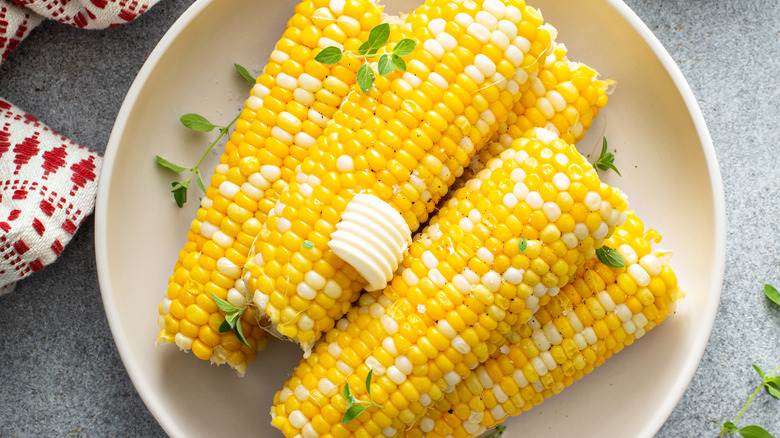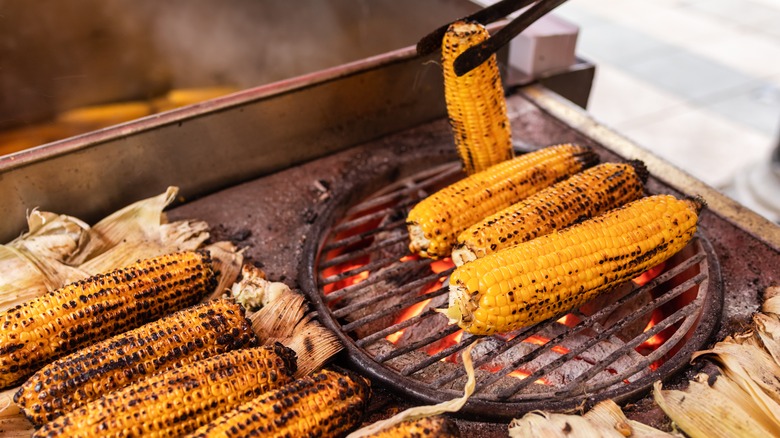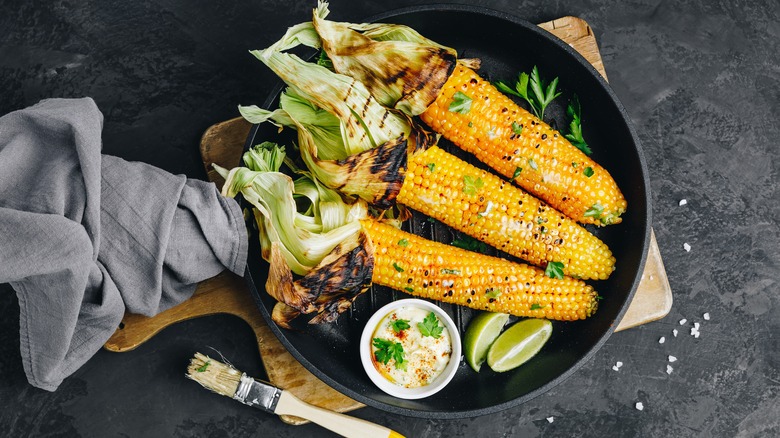The Science Behind Why It's A Bad Idea To Brine Your Corn
There's nothing like a good cookout. Whether you're grilling or smoking, there's just that extra something about preparing your food over the fire for the people you love. If you really get into it, you know there's a trick to making the best meat: brining. It makes it flavorful and juicy in a way that simply marinating for a couple of hours just doesn't quite match. That being said, you might think that a juicy ear of sweet corn will become even sweeter and juicier if brined in a sugar-salt solution. However, this couldn't be farther from the truth.
The science behind brining is osmosis, which is the process that occurs when liquid passes through cell walls. Brining works wonders on meat because of its muscle fibers. The salt draws existing moisture out of the cells, and the loss of moisture is replaced with the brine. We'll get more into this in a minute, but the key to it is the main structural part of a muscle cell, known as myofibril.
Because corn doesn't have muscle structure, moisture is drawn out of the kernels, but there's nothing to draw it back in and maintain it. Instead of plump, juicy, bursting kernels, you get dry, chewy ones.
Deep dive into brining
Think about what happens when you salt a vegetable, like eggplant or tomato: it draws the moisture out. Sometimes, this is exactly what you want — a more concentrated flavor with less water. However, one of the best parts of corn on the cob is a tender bite that explodes in your mouth, perfectly salted and buttered. While brining might seem like a great way to infuse the corn with delicious seasoning, as it makes meat succulent, corn doesn't have muscles.
Myofibril — the cell structure of muscles — makes up about 70% of the structure of lean meat, as noted in Meat Science. When they lose their water content to the salty brine, the myosin in the cells relaxes and denatures, which allows them to soak up the brine. They then swell to more than twice their original volume, mitigating the water loss during cooking. Because corn doesn't have myosin or myofibrils, there's nothing to soak up brine after the kernels dehydrate. J. Kenji Lopez Alt did his own experiments for Serious Eats, and proved it to be true: brined corn quickly becomes tough.
How to make better corn on the cob
If you want seasoned, plump, juicy, tender corn, there's a better way to achieve this — soak it. If you're going to try this method, however, make sure the water you use to soak your corn isn't salted. In the end, you're going to steam the corn on the grill inside of its own husk. By soaking it, you're creating a wetter environment and facilitating the steaming, rather than relying on the moisture within the corn and its husk to steam it.
If you like your corn with a little char on it, feel free to shuck it from its husk after steaming, and then put it back on the hot spot of your grill. Tend it closely, turning it often — by moving quickly, you'll char the outside of the corn without losing all the benefits of steaming.
For extra flavor, make a compound butter. As the butter melts into the corn, it'll take the flavor with it, seeping between the kernels. This may be what you really wanted out of brining your corn.


